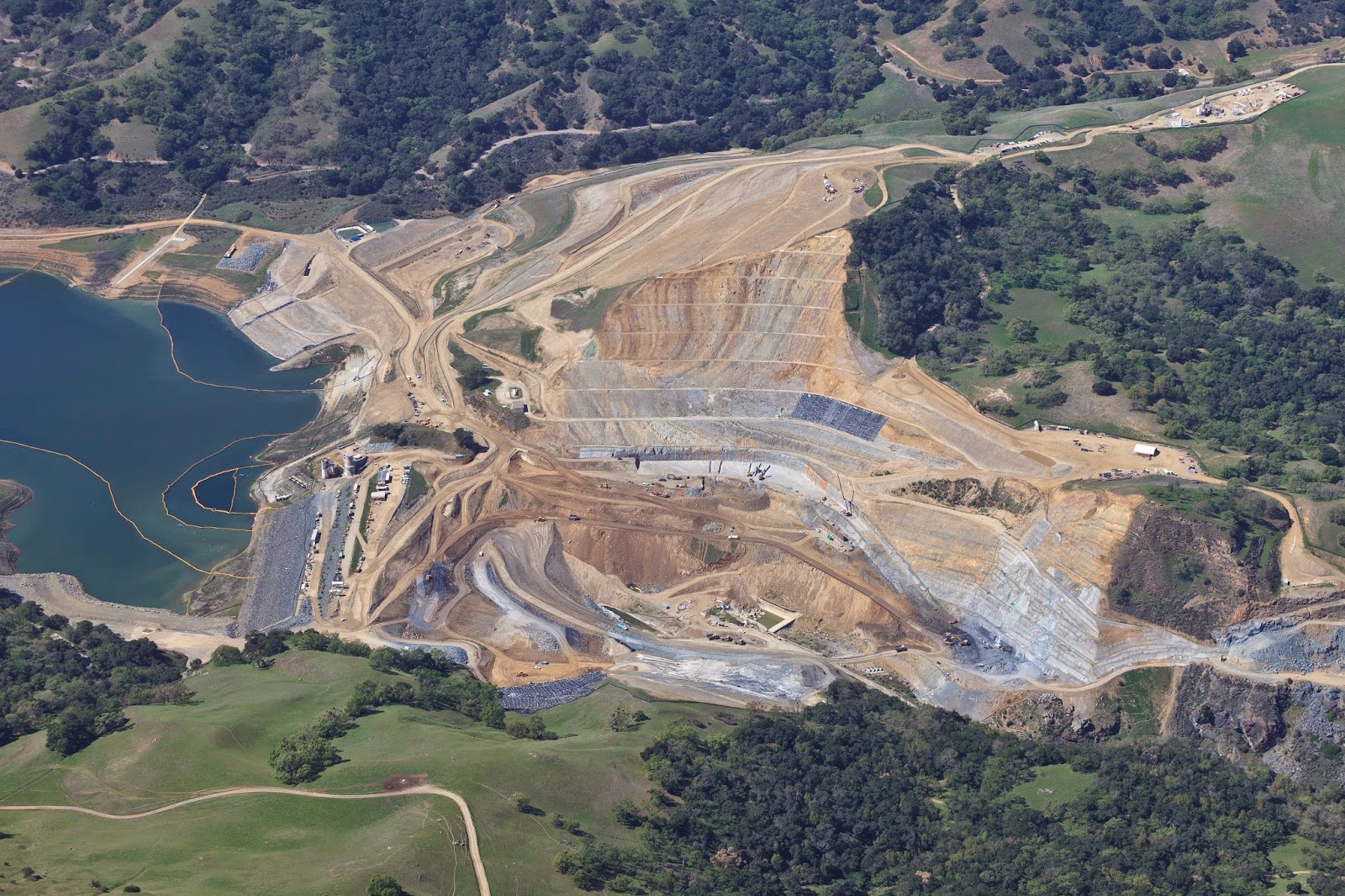By David Jacobson, Temblor
Check your seismic hazard rank

Over the last few days, we have focused on two dams that have been in the public spotlight due to fears of catastrophic failure either by erosion or earthquake. Fortunately, not all dams are like this, and in many cases in the Bay Area, projects are either underway or have been completed to reduce the vulnerability of water resources to earthquakes.

Back in 2002, San Francisco voters approved a bond measure to fund a $4.8 billion project to significantly improve the Hetch Hetchy Regional Water System. Included in this plan were steps to reduce the vulnerability of the system to damage from earthquakes. Such a project is significant as the system extends from San Francisco to Yosemite National Park. As it winds its way for approximately 230 km, it crosses three major faults, the San Andreas, Hayward, and Calaveras, each of which pose great hazards.
Now, nearly 15 years after the bond’s approval, the entire program is approximately 91% complete. Some of the completed projects include seismic upgrades to pipelines along the Peninsula, and a seismically-designed lifeline which carries water from the East Bay to the Peninsula. Additionally, the largest project, which gained more public attention in recent days, is the Calaveras Dam Replacement Project.
The Calaveras Dam is located in the East Bay, approximately 15 km northeast of the city of San Jose. Additionally, the Calaveras Fault runs through the reservoir and within 1,500 feet of the existing dam. Because of the fear that fault rupture could catastrophically release the contents of the dam, a replacement dam has been being built since 2011, at a cost of $810 million, and with an estimated finish date of April 2019.

Due to the seismic hazard of the area, the Calaveras Reservoir is not allowed to be at more than 40% capacity. However, once the new dam is completed this will no longer be required, and 31 billion gallons of water will be able to be stored. For a reservoir that is the largest provider of drinking water to 2.6 million Bay Area customers, this will be vital. Additionally, according to a report by ABC News, the new spillway, which was completed in April 2016, should hopefully “reduce the need for a major evacuation in the event of a catastrophic failure.” This is a sharp contrast to the situation at Oroville Dam, where risk of failure led to the evacuation of approximately 200,000 people. This new spillway is designed to be able to withstand the ground motion of a M=7.25 Calaveras earthquake. So, not only is the region protecting people, but valuable resources as well.
The video below is a timelapse showing construction of the new Calaveras Dam
Once all 87 projects are completed, the water resources to the Bay Area will be substantially more resilient to seismic hazards. Additionally, the largest infrastructure project ever undertaken by the city of San Francisco will provide a reliable stream of water that meets both the current and future needs of the region.
References
San Francisco Water Power Sewer
Water System Improvement Program (WSIP) Link
Calaveras Dam Replacement Project Fact Sheet Link
Hetch Hetchy Waster System Improvement Program (2015-2016 Annual Report, presented by the San Francisco Public Utilities Commission (SFPUC) Link
ABC News
- Magnitude 7 Yukon-Alaska earthquake strikes on the recently discovered Connector Fault - December 8, 2025
- Upgrading Tsunami Warning Systems for Faster and More Accurate Alerts - September 26, 2025
- April 2025 magnitude 6.2 earthquake near Istanbul highlights strengths and weaknesses in seismic mitigation - September 14, 2025
